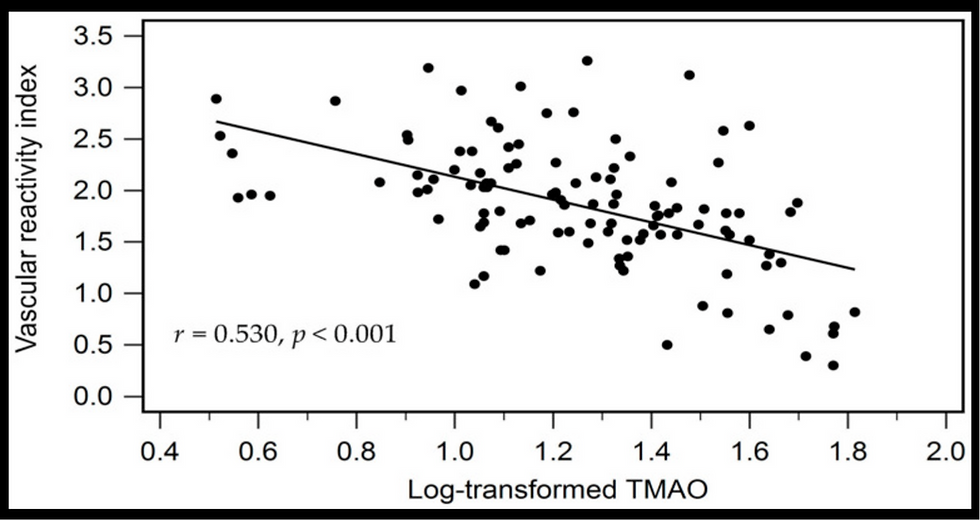Typical angina is associated with greater coronary endothelial dysfunction but not abnormal vasodila
- heartlung
- Jan 16, 2023
- 2 min read
Typical angina is associated with greater coronary endothelial dysfunction but not abnormal vasodilatory reserve
Clin Cardiol. 2017 Jun 12. doi: 10.1002/clc.22740. [Epub ahead of print] Typical angina is associated with greater coronary endothelial dysfunction but not abnormal vasodilatory reserve. AlBadri A1, Leong D1, Bairey Merz CN1, Wei J1, Handberg EM2, Shufelt CL1, Mehta PK3, Nelson MD1, Thomson LE4, Berman DS4, Shaw LJ3, Cook-Wiens G5, Pepine CJ2. Author information 1Barbra Streisand Women’s Heart Center, Cedars-Sinai Heart Institute, Los Angeles, California, USA.2Division of Cardiology, University of Florida, Gainesville, Florida, USA.3Program in Cardiovascular Outcomes Research and Epidemiology, Emory University, Atlanta, Georgia.4S. Mark Taper Foundation Imaging Center, Cedars-Sinai Medical Center, Los Angeles, California.5Biostatistics and Bioinformatics Research Center, Cedars-Sinai Medical Center, Los Angeles, California. Abstract BACKGROUND: Typical angina (TA) is defined as substernal chest pain precipitated by physical exertion or emotional stress and relieved with rest or nitroglycerin. Women and elderly patients are usually have atypical symptoms both at rest and during stress, often in the setting of nonobstructive coronary artery disease (CAD). HYPOTHESIS: To further understand this, we performed subgroup analysis comparing subjects who presented with TA vs nontypical angina (NTA) using baseline data of patients with nonobstructive CAD and coronary microvascular dysfunction (CMD) enrolled in a clinical trial. METHODS: 155 subjects from the RWISE study were divided into 2 groups based on angina characteristics: TA (defined as above) and NTA (angina that does not meet criteria for TA). Coronary reactivity testing (responses to adenosine, acetylcholine, and nitroglycerin), cardiac magnetic resonance-determined myocardial perfusion reserve index (MPRI), baseline Seattle Angina Questionnaire (SAQ), and Duke Activity Status Index (DASI) scores were evaluated. RESULTS: The mean age was 55 ± 10 years; Overall, 30% of subjects had TA. Baseline shortness of breath, invasively assessed acetylcholine-mediated coronary endothelial function, and SAQ score were worse in the TA group (all P 0.05), whereas adenosine-mediated coronary flow reserve, MPRI, and DASI score were similar to the NTA group. CONCLUSIONS: Among subjects with CMD and no obstructive CAD, those with TA had more angina pectoris, shortness of breath, and worse quality of life, as well as more severe coronary endothelial dysfunction. Typical angina in the setting of CMD is associated with worse symptom burden and coronary endothelial dysfunction. These results indicate that TA CMD subjects represent a relatively new CAD phenotype for future study and treatment trials. © 2017 The Authors. Clinical Cardiology published by Wiley Periodicals, Inc. KEYWORDS: Atypical Angina; Coronary Endothelial Dysfunction; Coronary Microvascular Dysfunction; Quality of Life; Typical Angina Endothelial Function Scientific Update Sponsored by Endothelix Inc. www.endothelix.com Click here to view previous updates.
![Lipoprotein(a) levels predict endothelial dysfunction in maintenance hemodialysis patients: evidence from [VENDYS] vascular reactivity index assessment](https://static.wixstatic.com/media/dac531_5285607cc591409a9d83746f042af7c6~mv2.png/v1/fill/w_980,h_980,al_c,q_90,usm_0.66_1.00_0.01,enc_avif,quality_auto/dac531_5285607cc591409a9d83746f042af7c6~mv2.png)


Comments